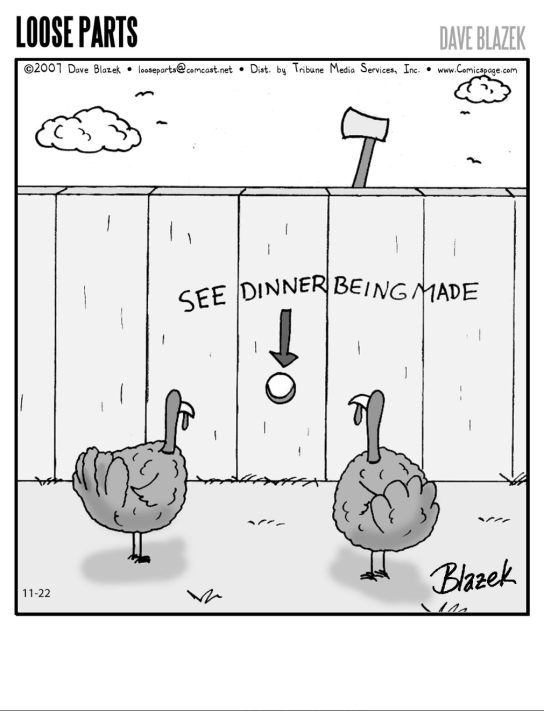
With many aspiring artists in today’s society, it is a common understanding that you must devote a lot of time to develop your skills. It has become somewhat of a necessity that young adults who are interested in taking those skills forward take classes or even go to a university focusing on art.
For Dave Blazek, the head writer and illustrator for The Philadelphia Inquirer’s comic strip “Loose Parts,” that was quite the opposite.
Blazek had never experimented with drawing while growing up nor did he ever have the desire to design comics.
“I liked comics. I read them everyday,” Blazek said. “My parents bought me books filled with Peanuts cartoons that I would read on road trips.”
Blazek states that he did not start making comics until he reached his 40s. Blazek had experience in writing humorous advertising for the Inquirer, as well as a large background in stand-up comedy. Blazek only ever started drawing when he turned 43.
“Since I was a stand-up comic, cartoonists who made comics for The Inquirer would show me their cartoons and I’d keep telling them they weren’t funny,” Blazek said. “What they basically told me was, ‘why don’t you just do it yourself, Mr. Smartypants?’”

In 1999, the comic strip “Loose Parts” began as a collaborative effort between Blazek and fellow co-worker, John Gilpin. Blazek originally just wrote for the strips, while Gilpin, who had prior experience with drawing cartoons, illustrated the comic.
In 2001, Gilpin grew sick and could no longer fulfill his duties when it came to illustrating the comic. Blazek then was faced with the choice of taking over the comic entirely from both a writing and illustrating standpoint.
“I figured I had to learn how to draw and I had to learn fast,” Blazek said.
It was difficult for Blazek at first but after daily practice, he quickly learned to get into the pace of things.
“At first, it was a lot of hours that were spent sitting in a chair,” Blazek said. “If you do one everyday for a while, you get better and by now, I’ve done six or seven thousand in a row.”
Blazek acknowledges that while drawing is something everyone is capable of doing, he believes it takes special talent to be done well. He struggled to make his comics look as visually appealing as Gilpin was able to.
“I had a friend who helped me with drawing at the time and I kept telling him that my comics sucked and that I needed to get better,” Blazek said. “He told me, ‘you’re not as good as John [Gilpin] but your style and humor matches your artwork.”
Since Blazek makes comics daily, he is constantly required to obtain new and fresh ideas to include in his panels. Despite this, Blazek mentioned that he is not constantly thinking about it and books out a certain period of time a week to specifically focus on ideas.
“It’s too all-consuming if you’re just constantly thinking about it all the time,” Blazek said. “I find that if I sit in a corner for 15 minutes or so, I usually have somewhat of a funny joke or premise to work with.”
The humor in “Loose Parts” largely derives from Blazek’s ability to find anything funny, no matter what the circumstances are or how dark a topic may be.
“I have found that I can make fun of just about anything and so it’s all about finding the right premise to make fun of,” Blazek said.
Blazek also acknowledge that while it is important to find an audience, he mainly focuses on what he thinks is funny, rather that what others find funny.
“I’ve probably done more harm to my career than helping it by insisting upon writing what I specifically think is funny,” Blazek said.
Blazek mentioned that being a cartoonist is a full-time commitment and that anyone who is interested in making comics should commit to making one at least once a day.
“I’ve seen far too many people dilly-dally with it in the past,” Blazek said. “They try it for a little while and do about 12 dozen or so, when really, you need to be making them on a routine schedule.”
“These skills are something that can only be learned when doing it repetitively,” Blazek said.


